Roxbury | |
|---|---|
Ghost town | |
| Coordinates: 44°48′48″N65°10′03″W / 44.8133°N 65.1676°W | |
| Country | Canada |
| Province | Nova Scotia |
| Established | Mid-1800s (approximate) |
| Population | |
| • Total | 0 |
Roxbury is a small ghost town outside of Paradise, Nova Scotia.
Roxbury | |
|---|---|
Ghost town | |
| Coordinates: 44°48′48″N65°10′03″W / 44.8133°N 65.1676°W | |
| Country | Canada |
| Province | Nova Scotia |
| Established | Mid-1800s (approximate) |
| Population | |
| • Total | 0 |
Roxbury is a small ghost town outside of Paradise, Nova Scotia.
Legend has it that about sixty of the Acadian settlers took flight up the river and hid on the South Mountain to escape the Expulsion. [1] Their allies, the Mi’kmaq, raced on canoe from Grand-Pré, Nova Scotia to warn them what was coming in 1755. [2] [3]
Rumours persist that the fleeing Acadians left stashes of gold under Mile Rock on Roxbury Road,
The Acadians had expanded the Mi’kmaq toe-path into a lane, and the Loyalists made it a road off what’s now Route 201. By the mid-1800s, it had a population of about 70, with a school, a church and homes. A mill exported lumber to the railway station in Paradise. In the late 1800s Roxbury was a logging community with a population of several dozens, but the community ended after the face of the South Mountain was destroyed by a forest fire in 1903 and the community income was lost. [4]


Nova Scotia is one of the thirteen provinces and territories of Canada. It is one of the three Maritime provinces and one of the four Atlantic provinces. Nova Scotia is Latin for "New Scotland".

The Acadians are an ethnic group descended from the French who settled in the New France colony of Acadia during the 17th and 18th centuries. Most Acadians live in the Northern American region of Acadia, as it is the region where the descendants of a few Acadians who escaped the Expulsion of the Acadians re-settled. Most Acadians in Canada continue to live in majority French-speaking communities, notably those in New Brunswick where Acadians and Francophones are granted autonomy in areas such as education and health.

Lunenburg is a port town on the South Shore of Nova Scotia, Canada. Founded in 1753, the town was one of the first British attempts to settle Protestants in Nova Scotia.
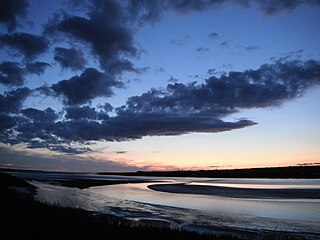
Truro is a town in central Nova Scotia, Canada. Truro is the shire town of Colchester County and is located on the south side of the Salmon River floodplain, close to the river's mouth at the eastern end of Cobequid Bay.
Windsor is a community located in Hants County, Nova Scotia, Canada. It is a service centre for the western part of the county and is situated on Highway 101.
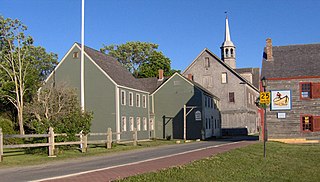
Shelburne is a town located in southwestern Nova Scotia, Canada.

Annapolis Royal, formerly known as Port Royal, is a town located in the western part of Annapolis County, Nova Scotia, Canada.

Edward Cornwallis was a British career military officer and was a member of the aristocratic Cornwallis family, who reached the rank of Lieutenant General. After Cornwallis fought in Scotland, putting down the Jacobite rebellion of 1745, he was appointed Groom of the Chamber for King George II. He was then made Governor of Nova Scotia (1749–1752), one of the colonies in North America, and assigned to establish the new town of Halifax, Nova Scotia. Later Cornwallis returned to London, where he was elected as MP for Westminster and married the niece of Robert Walpole, Great Britain's first Prime Minister. Cornwallis was next appointed as Governor of Gibraltar.

The Acadians are the descendants of 17th and 18th century French settlers in parts of Acadia in the northeastern region of North America comprising what is now the Canadian Maritime Provinces of New Brunswick, Nova Scotia and Prince Edward Island, the Gaspé peninsula in eastern Québec, and the Kennebec River in southern Maine. The settlers whose descendants became Acadians primarily came from the southwestern and southern regions of France, historically known as Occitania, while some Acadians are claimed to be descended from the Indigenous peoples of the region. Today, due to assimilation, some Acadians may share other ethnic ancestries as well.
Scotch Village is an unincorporated community on the Kennetcook River in the Canadian province of Nova Scotia, located in the Municipality of West Hants. This area was part of Newport Township at the time of settlement primarily by Rhode Island Planters in the early 1760s. It was referred to as “Scotchman’s Dyke” or “Scotch Village”, due to settlement of early families of Scottish descent. Prior to the arrival of the Planters, Scotch Village had been the home of Mi'kmaq and Acadians.
Paradise is an unincorporated community in the Canadian province of Nova Scotia, located about 30 km (18 mi.) northeast of Annapolis Royal in Annapolis County. The original French name, dating to 1684, was Paradis Terrestre, or Earthly Paradise.
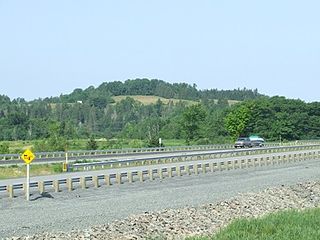
The Battle at St. Croix was fought during Father Le Loutre's War between Gorham's Rangers and Mi'kmaq at Battle Hill in the community of St. Croix, Nova Scotia. The battle lasted from March 20–23, 1750.

Pisiguit is the pre-expulsion-period Acadian region located along the banks of the Pisiquit River from its confluence with the Minas Basin of Acadia, which is now Nova Scotia, including the St. Croix River drainage area. Settlement in the region commenced simultaneous to the establishment of Grand-Pré. Many villages spread rapidly eastward along the river banks. These settlements became known as Pisiguit or. The name is from the Mi'kmaq Pesaquid, meaning "Junction of Waters". In 1714, there were 351 people there.

The Raid on Dartmouth occurred during Father Le Loutre's War on May 13, 1751, when a Miꞌkmaq and Acadian militia from Chignecto, under the command of Acadian Joseph Broussard, raided Dartmouth, Nova Scotia, destroying the town and killing twenty British villagers and wounding British regulars. The town was protected by a blockhouse on Blockhouse Hill with William Clapham's Rangers and British regulars from the 45th Regiment of Foot. This raid was one of seven the Natives and Acadians would conduct against the town during the war.
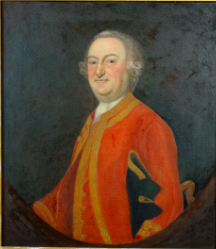
The Bay of Fundy campaign occurred during the French and Indian War when the British ordered the Expulsion of the Acadians from Acadia after the Battle of Fort Beauséjour (1755). The campaign started at Chignecto and then quickly moved to Grand-Pré, Rivière-aux-Canards, Pisiguit, Cobequid, and finally Annapolis Royal. Approximately 7,000 Acadians were deported to the New England colonies.
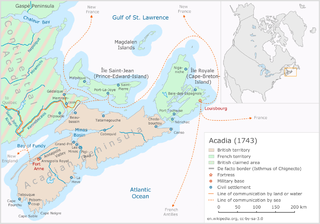
Father Le Loutre's War (1749–1755), also known as the Indian War, the Mi'kmaq War and the Anglo-Mi'kmaq War, took place between King George's War and the French and Indian War in Acadia and Nova Scotia. On one side of the conflict, the British and New England colonists were led by British officer Charles Lawrence and New England Ranger John Gorham. On the other side, Father Jean-Louis Le Loutre led the Mi'kmaq and the Acadia militia in guerrilla warfare against settlers and British forces. At the outbreak of the war there were an estimated 2500 Mi'kmaq and 12,000 Acadians in the region.

Nova Scotia is a Canadian province located in Canada's Maritimes. The region was initially occupied by Mi'kmaq. The colonial history of Nova Scotia includes the present-day Maritime Provinces and the northern part of Maine, all of which were at one time part of Nova Scotia. In 1763, Cape Breton Island and St. John's Island became part of Nova Scotia. In 1769, St. John's Island became a separate colony. Nova Scotia included present-day New Brunswick until that province was established in 1784. During the first 150 years of European settlement, the colony was primarily made up of Catholic Acadians, Maliseet, and Mi'kmaq. During the last 75 years of this time period, there were six colonial wars that took place in Nova Scotia. After agreeing to several peace treaties, the long period of warfare ended with the Halifax Treaties (1761) and two years later, when the British defeated the French in North America (1763). During those wars, the Acadians, Mi'kmaq and Maliseet from the region fought to protect the border of Acadia from New England. They fought the war on two fronts: the southern border of Acadia, which New France defined as the Kennebec River in southern Maine, and in Nova Scotia, which involved preventing New Englanders from taking the capital of Acadia, Port Royal and establishing themselves at Canso.
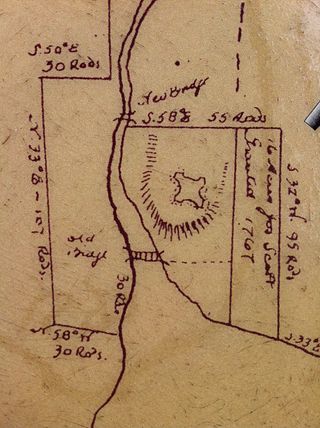
Fort Sackville was a British fort in present-day Bedford, Nova Scotia. It was built during Father Le Loutre's War by British adjacent to present-day Scott Manor House, on a hill overlooking the Sackville River to help prevent French, Acadian and Mi'kmaq attacks on Halifax. The fort consisted of a blockhouse, a guard house, a barracks that housed 50 soldiers, and outbuildings, all encompassed by a palisade. Not far from the fort was a rifle range. The fort was named after George Germain, 1st Viscount Sackville.
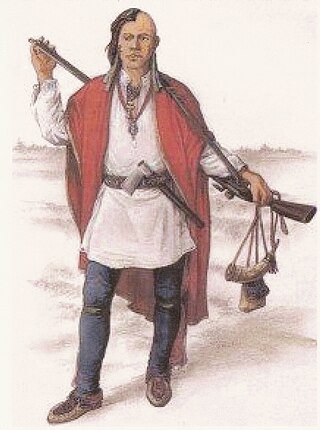
The military history of the Mi'kmaq consisted primarily of Mi'kmaq warriors (smáknisk) who participated in wars against the English independently as well as in coordination with the Acadian militia and French royal forces. The Mi'kmaq militias remained an effective force for over 75 years before the Halifax Treaties were signed (1760–1761). In the nineteenth century, the Mi'kmaq "boasted" that, in their contest with the British, the Mi'kmaq "killed more men than they lost". In 1753, Charles Morris stated that the Mi'kmaq have the advantage of "no settlement or place of abode, but wandering from place to place in unknown and, therefore, inaccessible woods, is so great that it has hitherto rendered all attempts to surprise them ineffectual". Leadership on both sides of the conflict employed standard colonial warfare, which included scalping non-combatants. After some engagements against the British during the American Revolutionary War, the militias were dormant throughout the nineteenth century, while the Mi'kmaq people used diplomatic efforts to have the local authorities honour the treaties. After confederation, Mi'kmaq warriors eventually joined Canada's war efforts in World War I and World War II. The most well-known colonial leaders of these militias were Chief (Sakamaw) Jean-Baptiste Cope and Chief Étienne Bâtard.

The military history of the Acadians consisted primarily of militias made up of Acadian settlers who participated in wars against the English in coordination with the Wabanaki Confederacy and French royal forces. A number of Acadians provided military intelligence, sanctuary, and logistical support to the various resistance movements against British rule in Acadia, while other Acadians remained neutral in the contest between the Franco–Wabanaki Confederacy forces and the British. The Acadian militias managed to maintain an effective resistance movement for more than 75 years and through six wars before their eventual demise. According to Acadian historian Maurice Basque, the story of Evangeline continues to influence historic accounts of the expulsion, emphasising Acadians who remained neutral and de-emphasising those who joined resistance movements. While Acadian militias were briefly active during the American Revolutionary War, the militias were dormant throughout the nineteenth century. After confederation, Acadians eventually joined the Canadian War efforts in World War I and World War II. The most well-known colonial leaders of these militias were Joseph Broussard and Joseph-Nicolas Gautier.